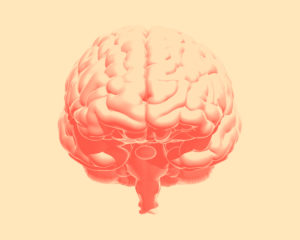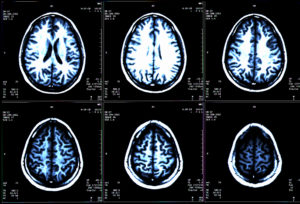
Each year, approximately 10 million individuals experience traumatic brain injury (TBI), with a vast majority of these injuries classified as mild TBIs (mTBIs). Commonly referred to as concussions, mTBIs can sometimes result in a wide array of symptoms including headaches, fatigue, anxiety, depression, and difficulties with memory and attention.
Chronic exposure to mTBI has been associated with an increased risk of neurodegenerative disease later in life, however this is not necessarily a definite fate for all patients. It is currently unclear how mTBI drives symptoms, and why some individuals seem to be more susceptible or more resilient to the effects of concussion.
Changes at the cellular level in brains with concussion history
In a study published on 14 November 2019 in Acta Neuropathologica Communications, we analyzed 38 donated human brains with a chronic history of mTBI through involvement in contact sports, such as American football, hockey, rugby, and boxing.

We found evidence of inefficient DNA damage repair and the acquisition of cellular senescence (the irreversible ceasing of normal cell division), which may be a pathophysiological mechanism which causes brain dysfunction after mTBI. We suggest that this phenomenon may explain why some individuals are more susceptible or resilient to the effects of concussion than others.
In these brains we assessed load of DNA damage, immunohistochemical markers of cellular senescence, and gene expression. Compared to healthy participants of the same age, mTBI brains presented with significantly elevated levels of DNA damage.
Brains with a history of mTBI also showed significant decreased expression of key DNA damage repair enzymes, including the breast cancer susceptibility type 1 (BRCA1) protein.
From these results, we suggest that brains with a history of mTBI have inefficient DNA repair mechanisms, resulting in elevated accumulation of DNA damage.
In addition to changes in DNA damage and DNA repair abilities, we found that brains with mTBI history presented with hallmark features of cellular senescence – a state of permanent cell-cycle arrest, characterized by chronic inflammation and genomic instability which can be induced by the presence of DNA damage and which has been shown to underlie cognitive decline, neurodegenerative conditions, and ageing. In our study, mTBI brains presented with the swelling of astrocytes – star-shaped cells of the central nervous system – and loss of certain nuclear membrane proteins.

All of these changes are features of cellular senescence reminiscent of genotoxic stress and altered gene expression patterns. Indeed, when we analyzed gene expression we found significantly increased expression of genes involved in cell cycle arrest, senescent cell signalling, and pro-inflammatory factors known to be secreted by senescent cells.
Together, these results suggest that brains with a history of mTBI are experiencing cellular senescence.
Implications of DNA damage and cellular senescence for individuals with concussions
This study shows that a chronic history of concussions is associated with decreased expression of DNA repair enzymes, and an increased burden of DNA damage and markers of cellular senescence. This implies that an individual’s ability to efficiently repair DNA damage might underlie whether or not they recover well from a concussion.
It is important to consider that many DNA repair enzymes are polymorphic, meaning that they are genetically variable and have different patterns of expression between individuals.
Again using BRCA1 as an example, it is well established that naturally occurring point mutations in the BRCA1 gene can confer susceptibility to breast cancer. By the same logic, it is possible that different expression patterns of DNA repair genes (such as BRCA1) may render some individuals susceptible to the effects of concussion, due to inefficient DNA repair mechanisms in the brain.

By extension, some individuals may also have gene expression patterns which would confer resilience to the effects of head trauma due to overly efficient DNA repair mechanisms in the brain.
While we do not yet fully understand how the pathways of DNA damage and cellular senescence impact mTBI outcomes, we believe these outcomes are likely specific to each individual. The pathophysiology of concussion is therefore a complex issue to tackle, as it is possible that each person has different molecular repercussions in response to the same injury.
In the context of sports, this means that we may not be able to implement “one size fits all” policies, and may need to cater to individual needs for both prevention and treatment of traumatic brain injury.
Lili-Naz Hazrati and Nicole Schwab
Nicole Schwab gained a BSc in Human Biology and Neuroscience from the University of Toronto, after which she acquired her MSc in Dr. Lili-Naz Hazrati’s lab at the Hospital for Sick Children in Toronto, Ontario, Canada. Nicole is now pursuing her PhD in Laboratory Medicine and Pathology in Dr. Hazrati’s lab. Her research focuses on the pathophysiological mechanisms of traumatic brain injury, particularly the roles of DNA damage repair and cellular senescence.
Latest posts by Lili-Naz Hazrati and Nicole Schwab (see all)
- Your DNA may underlie the severity of your concussion symptoms - 18th November 2019
Comments